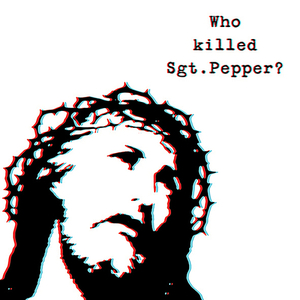Influences on new BJM album run the gamut
With the release of its eleventh studio album Who Killed Sgt. Pepper, the Brian Jonestown Massacre has reinvented its sound once again.

The one · For Brian Jonestown Massacre’s 11th studio album, the band incorporated electronica, shoegaze and Middle Eastern sounds. - Photo courtesy of A Records
Throughout its nearly two-decade existence, the band has produced a diverse catalogue of albums crossing genres from folk rock to shoegaze to noise pop, all the while maintaining its authentic ’60s psychedelic aesthetic. Perhaps the band’s musical diversity is a reflection of its inner workings. Ever since its formation in 1990, the group has shuffled through more than 25 different members — enough people to fill the roster of a baseball team.
Despite the near constant change, however, the band has had one from the start: front man Anton Newcombe. A controversial figure, Newcombe was portrayed in the 2004 film DiG! — a documentary following the Brian Jonestown Massacre and fellow rockers The Dandy Warhols — as an egotistical, drug-addicted musical genius.
The most noteworthy scene was an on-stage scuffle during an industry showcase at the Viper Room in which the concert ended with bloodied noses, battered band members and no record deal, all because of Newcombe’s inability to collaborate with his band. Nevertheless, Newcombe remains a man with high ambitions and great expectations for his music.
With Who Killed Sgt. Pepper, the Brian Jonestown Massacre embarks on its most multi-cultured album to date. The opening track, “Tempo 116.7 (Reaching For Dangerous Levels Of Sobriety),” is an instrumental tune, meshing electronic sounds with exotic instruments. The song features ambient Bhangra beats and eastern European influences, evoking visualizations of a distant land, as if to transport the listener to the Punjab region of India. Straight from the beginning, the densely layered sonic landscape on this track sets the tone for the rest of the album.
The very next track, “Tunger Hnifur,” charges forward with a driving pulse that will have listeners stomping their feet. The ruthless nature of the song is accentuated by its aggressively throbbing beat mixed with Newcombe’s distorted vocals, which render the lyrics nearly indiscernible.
During the chorus, the band unleashes roaring guitar-fuzz and powerful cymbal-splashing that brings a new high to the song’s level of intensity. With all the underlying guitar licks and screaming vocals, this song deserves — and can only be fully appreciated with — the volume up to 10.
After the album’s strong opening, the energy flags in the following two tracks. “Let’s Go Fucking Mental,” a lackluster tune with an overused hook, represents the album’s main flaw: too much repetition. The anthemic, slightly meandering chorus lacks variation and comes across as rather dull.
“White Music” does nothing to salvage the album’s flow in the wake of its predecessor. With ambient swells and echoing vocals, this tiresome two-and-a-half-minute experimentation will potentially turn off listeners. It functions as little more than album filler between more memorable songs.
Fortunately, the next track, “This Is the First of Your Last Warnings,” begins to build up the album’s momentum again. The catchy tune features an infectious beat complemented by crunchy guitar distortion — it’s easily the highlight of the album. Textures of Middle Eastern-influenced vocals in the background and sampled percussive beats permeate the rich recording.
The ethereal vocals of Icelandic artist Unnur Andrea Einarsdottir spruce up what is already an absorbing song. Introduced nearly two minutes into the track, Einarsdottir’s nourishing harmonies elicit visualizations and feelings like a thin blanket of silk over the atmospheric synthesizers.
The Brian Jonestown Massacre’s characteristically raw sound is emphasized in “Our Time,” a shoegaze-influenced, post-punk revival song. The glistening drone of the guitars coupled with the soft and airy vocals make for great listening on a dazed summer day in the suburbs. While it maintains the hypnotic quality, this song lacks the aggressiveness that characterizes the rest of the album. It makes for a pleasant deviation from the norm and adds much-needed diversity to the record.
Although Who Killed Sgt. Pepper’s prospects of commercial success might not be the greatest, alternative rock fans will likely celebrate the album as an innovative collection of songs that eclectically mesh various musical elements ranging from shoegaze to Eastern-influenced electronica.
While many original followers of the Brian Jonestown Massacre will undoubtedly dismiss the new album as one that lacks the group’s distinguishing qualities, others will welcome the new sound as a natural evolution in the band’s music.

Like a hot bacon sandwhich with pineapple and banana.